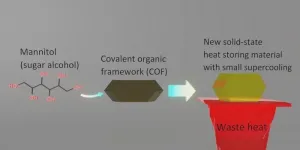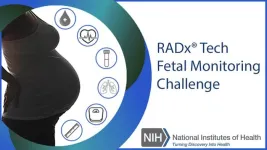(Press-News.org) HOUSTON ― Researchers at The University of Texas MD Anderson Cancer Center have discovered that certain nano-based cancer therapies may be less effective in younger patients, highlighting the need for further investigation into the impact of aging on the body’s ability to respond to treatment.
The researchers found age-related differences are due to how effectively the liver filters the bloodstream. Younger livers are more efficient at this process, which helps limit toxins in the blood but also filters out beneficial treatments, potentially rendering them ineffective.
The study, published today in Nature Nanotechnology, was led by Wen Jiang, M.D., Ph.D., associate professor of Radiation Oncology, and Betty Kim, M.D., Ph.D., professor of Neurosurgery.
“Put simply, our liver is designed to protect us, but for young people it might also be protecting them in a way that limits the effectiveness of nanotherapies,” Jiang said. “There’s so much interest right now in nano-scale delivery systems and designs, but nobody has really considered how age plays a role in the effectiveness of these systems. In preclinical models, younger livers actually work so well that they filter out a significant amount of the nanomedicine. That means, in some cases, these drugs may be less effective in younger patients than in older ones.”
Unlike traditional cancer therapies, in which medicine is directly introduced to the body, nanomedicines use nano-scale carriers to deliver treatments. Some of the advantages of nanomedicine formulations can include reduced toxicity, increased target specificity and increased dosage, depending on the goal of the treatment.
To date, more than 50 nano-based therapies have been approved by the Food and Drug Administration, including 19 currently listed by the National Cancer Institute for use in cancer. The study treatment was nanoparticle-albumin-bound paclitaxel, which has been used since 2005 for certain refractory or relapsed cancers.
Scientists do not fully understand all the mechanisms for how, exactly, the liver filters the bloodstream, but previous studies have indicated a correlation between the rate of clearance and the expression of the scavenger receptor MARCO. This protein is expressed more in younger Kupfer cells, the immune cells that reside in the liver.
After confirming the disparity in results between young and old models, the team investigated therapeutic blockade of MARCO as a possible strategy to avoid drug clearance. Blocking MARCO reduced the uptake of the nanomedicine and improved the drug’s antitumor effects from the cancer therapeutics, but only in the younger models.
“This is just one example, but these results show that there may not always be a one-size-fits-all drug delivery strategy that is effective across diverse patient populations, and that personalized design is warranted in future nanomedicines,” Jiang said. “Hopefully, this study also opens the door for more thorough investigation of the clearance process and how to overcome it.”
Jiang emphasized that while this study focuses on cancer, it examines a potential hurdle for any nanodrug delivery system. There are different proteins, antibodies and viruses with unique clearance mechanisms, but it all comes down to the liver, he explained.
This research work was supported by the Cancer Prevention and Research Institute of Texas (RR180017) and the National Institutes of Health (P30CA016672).
END
Research identifies new potential hurdle for nano-based therapies
New study shows how the liver may inhibit distribution of nanomedicines in younger patients, limiting effectiveness
2023-09-18
ELSE PRESS RELEASES FROM THIS DATE:
Improving the properties of sweeteners for enhanced thermal energy storage
2023-09-18
As we seek more efficient utilization of waste thermal energy, use of “phase change materials (PCMs)” is a good option. PCMs have a large latent heat capacity and the ability to store-and-release heat as they change from one state of matter to another. Among many PCMs, sugar alcohols (SAs), a class of organic compounds commonly used as sweeteners, stand out due to their low cost, non-toxic, non-corrosive, and biodegradable nature. In particular, SAs generally have their melting point in 100–200 °C, which is an important temperature range where a huge amount of waste heat exists but is currently ...
Ohio State leads new global climate center on AI for biodiversity change
2023-09-18
COLUMBUS, Ohio – The Ohio State University will lead a new multimillion dollar international center devoted to using artificial intelligence to help understand climate impacts on biodiversity.
The AI and Biodiversity Change (ABC) Global Climate Center will bring together ecologists and computer scientists from six universities in the United States and Canada, with partners in UK, Europe, and Australia, to develop new AI-enabled, data-supported approaches to study how changes in climate are impacting life – including animals, plants and insects – on Earth.
$5 ...
Ohio State researchers publish national guidelines for ALS genetic testing, counseling
2023-09-18
COLUMBUS, Ohio – Researchers at The Ohio State University Wexner Medical Center and College of Medicine led the creation of evidence-based consensus guidelines for genetic testing and counseling for patients with amyotrophic lateral sclerosis (ALS), a neurodegenerative disease that affects the cells in the brain and spine.
These evidence-based, consensus guidelines provide clinicians with a framework for the offer of genetic testing and outline the information that should be provided to persons with ALS before and after testing. In addition, the guidelines provide specific recommendations regarding ...
Study: Admissions policies that consider grades and test scores in context of available opportunities are linked to college success
2023-09-18
Indicators of high school grades and standardized test scores that take into account the levels of school, neighborhood, and family resources available to students are strongly associated with those students’ success in college, according to new research published today. The study, published in AERA Open, a peer-reviewed journal of the American Educational Research Association, emerges against the backdrop of the recent Supreme Court decision to ban race-conscious admissions in higher ...
Unlocking urban diversity: The magnetism of complex amenities
2023-09-18
Diversity fuels prosperity in cities, but where do people from diverse backgrounds meet? A study from the Complexity Science Hub now indicates that locations offering a range of rare shops and services may hold the key.
Extensive research consistently underscores a common factor in successful cities: diversity. Encouraging interactions between individuals of different backgrounds fosters the exchange of ideas, leading to innovation and economic success. “However, segregation persists in urban ...
Latest blood cancer treatment updates presented at annual NCCN event during Blood Cancer Awareness Month
2023-09-18
SAN FRANCISCO, CA [September 18, 2023] — The National Comprehensive Cancer Network® (NCCN®) 2023 Annual Congress: Hematologic Malignancies™ returns to San Francisco this week, for the first time since 2019. The meeting features insights from world-renowned experts on providing optimal, evidence-based treatment for various blood cancers, plus best practices for protecting vulnerable populations in a changing healthcare landscape.
The live event is taking place September 22-23, 2023, at the Hilton San Francisco Union Square. ...
How do suicide risk or depression screenings compare to identify patients at risk?
2023-09-18
Editor’s Note: September is National Suicide Prevention Month.
COLUMBUS, Ohio – Research led by The Ohio State University Wexner Medical Center and Wesleyan University found that depression screening tools outperformed suicide risk screenings under most conditions.
“We compared the effectiveness of multiple depression and suicide risk screening methods for the purpose of identifying primary care patients who subsequently attempted suicide. Our findings may generate a lot of discussion within the suicide prevention community, as it contradicts long-held assumptions ...
Atomic layer deposition route to scalable, electronic-grade van der Waals Te thin films
2023-09-18
A research team, led by Professor Joonki Suh in the Department of Materials Science and Engineering and the Graduate School of Semiconductor Materials and Devices Engineering at UNIST, has made a significant breakthrough in thin film deposition technology. By employing an innovative atomic layer deposition (ALD) process, Professor Seo successfully achieved regular arrangement of tellurium (Te) atoms at low temperatures as low as 50 degrees Celsius.
The ALD method is a cutting-edge thin film process that enables precise stacking ...
NIH launches $2 million prize competition to spur innovation in fetal diagnostic and monitoring technologies
2023-09-18
The National Institutes of Health will award up to $2 million in cash prizes to accelerate development of diagnostic and monitoring technologies that improve fetal health outcomes in low-resource settings. The Rapid Acceleration of Diagnostics Technology (RADx® Tech) Fetal Monitoring Challenge calls on scientists, engineers, and clinicians around the country to submit their innovative approaches and compete for prizes and additional resources to support technology development and clinical impact. The challenge is sponsored by the NIH’s National Institute of Biomedical Imaging and Bioengineering (NIBIB), ...
Incubator or barrier? Exploring the links between agriculture, biodiversity and the spread of pathogens
2023-09-18
Many pathogens, including the virus that causes COVID-19, are thought to have originated in wild animals before spilling into human populations.
Agriculture is often blamed for accelerating this process, which is known as zoonotic spillover, through deforestation and habitat fragmentation that reduce biodiversity and increase the likelihood of contact between infected wildlife and humans.
But in a Perspectives article published online Sept. 15 in the journal One Earth, University of Michigan ecologist Ivette Perfecto and her colleagues argue that agriculture can both help and hinder: ...
LAST 30 PRESS RELEASES:
Novel endocrine therapy giredestrant improves disease-free survival over standard of care for patients with early-stage breast cancer in phase III lidERA trial
Gen Z views world as "scary place" with growing cynicism about ability to create change
Biosensor performance doubled – New applications possible
Leveraging incomplete remote sensing for forest inventory
Key chemical in dark chocolate may slow down ageing
New 15-minute hepatitis C test paves the way for same-day treatment
Uranus and Neptune might be rock giants
Magnetically actuated soft electrodes for multisite bioelectrical monitoring of ex vivo tissues
FAU engineers decode dementia type using AI and EEG brainwave analysis
Carrier-free peptide–daunorubicin–small interfering RNA nanoassembly for targeted therapy of acute myeloid leukemia
Global Virus Network announces appointment of new board members
Artificial beaver dams show promise in offsetting climate change effects
Could hidden infections be fueling long COVID?
Targeted oxygen for initial resuscitation of preterm infants
Researchers develop models to help diagnose ALS earlier through blood biomarkers
Jeonbuk National University researchers develop novel eco-friendly and photo-switchable smart adhesives
Magnetic ordering induces Jahn–Teller effect in spinel-type compounds
A mitochondrial protein may hold the secret to longevity, new study finds
Study shows how everyday repairs sustain autonomy in a Japanese squat
Ancient manatee relative reveals that sea cows have engineered the Arabian Gulf’s seagrass ecosystems for over 20 million years
Fecal tests reveal active termite attacks
Uterine fibroids linked to elevated heart disease risk
Dual use of cigarettes and vapes can reduce risks of smoking and help smokers quit
New bioelectronics device based on hydrogel- elastomer conductive nanomembranes
More yield through heterosis: IPK research team decodes gene interaction
James Webb telescope reveals spectacular atmospheric escape
ICE-CSIC leads a pioneering study on the feasibility of asteroid mining
Dramatic rise in young people using mental health services
Be careful trusting TikTok for gout advice
A study by the University of Seville links the vanishing of the specific heats at absolute zero with the principle of entropy increase
[Press-News.org] Research identifies new potential hurdle for nano-based therapiesNew study shows how the liver may inhibit distribution of nanomedicines in younger patients, limiting effectiveness





